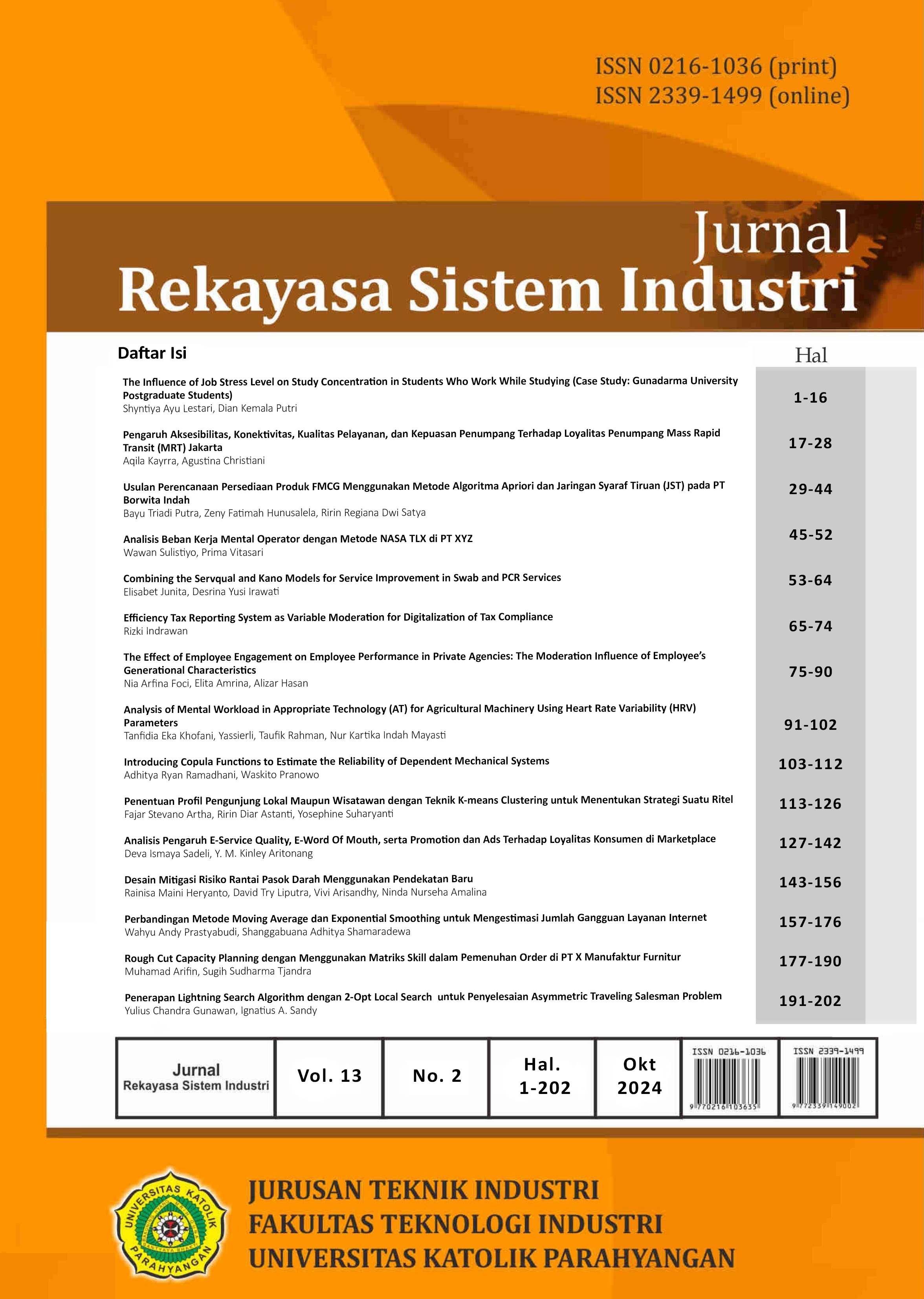A New Approach to Designing Blood Supply Chain Risk Mitigation
DOI:
https://doi.org/10.26593/jrsi.v13i2.7326.143-156Abstract
Blood is an essential component for body and plays critical role in human survival. Hospital blood banks (HBB) are responsible for ensuring availability and safety of blood in particular area. Risks that could arise in blood supply chain at HBB need to receive full attention, especially in the event of an outbreak or disaster. This attention is necessary to ensure smooth flow of activities, information, products, and finances. The primary objective of this research is to develop risk mitigation design for the blood supply chain. This research focuses on case study at HBB in Bandung City with specific focus on packaged red blood cells. The new approach used in this research involves initiating process by collecting potential risks, which are then defined and classified within the supply chain operations reference (SCOR) model. Subsequently, questionnaires were distributed to gather input for calculating weights using the analytical hierarchy process (AHP). Following step involves identifying root cause of these risk through fault tree analysis (FTA) and determining the most influential risk causes using failure mode effect and analysis (FMEA). Final phase entails designing strategies for mitigating risks in blood supply chain. This research aims to assist HBB facilities in prioritizing risks for treatment and implementing strategies to minimize these risks within their respective areas. According to AHP results, risk with the highest weight (0.173) is unavailability of blood stock at Indonesian Red Cross due to a shortage of donors. This risk can be mitigated by incorporating blood donation activities in agencies and HBB. The new approach in the research could provide more detailed mapping of blood supply chain risks.
References
Amalina, N. N., Liputra, D. T., & Heryanto, R. M. (2024). Analisis Penyebab Risiko pada Rantai Pasok Darah di Masa Pandemi COVID-19 Menggunakan Model Supply Chain Operations Reference (SCOR) dan Failure Modes and Effects Analysis (FMEA). Jurnal Integrasi Sistem Industri UMJ, 11(1). https://doi.org/10.24853/jisi.11.1.65-76
Arjuna, A., Santoso, S., & Heryanto, R. M. (2022). Green Supply Chain Performance Measurement using Green SCOR Model in Agriculture Industry: A Case Study. Jurnal Teknik Industri, 24(1), 53–60. https://doi.org/10.9744/jti.24.1.53-60
Boonyanusith, W., & Jittamai, P. (2018). Blood Supply Chain Risk Management using House of Risk Model. Walailak Journal of Science and Technology (WJST), 16(8), 573–591. https://doi.org/10.48048/wjst.2019.3472
Farhana, L. E., Senjawati, N. D., & Utami, H. H. (2020). Analisis dan Mitigasi Risiko Rantai Pasok Kakao di Griya Cokelat Nglanggeran Gunungkidul Yogyakarta. Jurnal Dinamika Sosial Ekonomi, 20(1), 55. https://doi.org/10.31315/jdse.v20i1.3250
Hendricks, K. B., & Singhal, V. R. (2009). An Empirical Analysis of the Effect of Supply Chain Disruptions on Long-Run Stock Price Performance and Equity Risk of the Firm. Production and Operations Management, 14(1), 35–52. https://doi.org/10.1111/j.1937-5956.2005.tb00008.x
Profita, A. (2017). Optimasi Manajemen Persediaan Darah Menggunakan Simulasi Monte Carlo. Journal of Industrial Engineering Management, 2(1), 16. https://doi.org/10.33536/jiem.v2i1.101
Puji, A. A., & Yul, F. A. (2021). House Of Risk Model & AHP - TOPSIS untuk Pengelolaan Risiko Rantai Pasok Darah. Jurnal Teknik Industri: Jurnal Hasil Penelitian Dan Karya Ilmiah Dalam Bidang Teknik Industri, 7(1), 15. https://doi.org/10.24014/jti.v7i1.11353
Ridwan, A., Trenggonowati, D. L., & Parida, V. (2019). Usulan Aksi Mitigasi Risiko Rantai Pasok Halal pada IKM Tahu Bandung Sutra Menggunakan Metode House of Risk. Journal Industrial Servicess, 5(1). https://doi.org/10.36055/jiss.v5i1.6512
Sari, N. M. D. A., Satriawan, I. K., & Sadyasmara, C. A. B. (2020). Analisis dan Strategi Mitigasi Risiko Produksi Teh Botol Sosro di PT. Sinar Sosro Pabrik Bali. JURNAL REKAYASA DAN MANAJEMEN AGROINDUSTRI, 8(2), 257. https://doi.org/10.24843/JRMA.2020.v08.i02.p10
Shahbaz, M. S., RM, R. Z., Bin, M. F., & Rehman, F. (2017). What is Supply Chain Risk Management? A Review. Advanced Science Letters, 23(9), 9233–9238. https://doi.org/10.1166/asl.2017.10061
Stamatis, D. H. (2003). Failure Mode and Effect Analysis: FMEA from Theory to Execution. ASQ Quality Press.
Valan, J. A., & Raj, Dr. E. B. (2019). Machine Learning and Big Data Analytics in IoT based Blood Bank Supply Chain Management System. International Journal of Advanced Engineering, Management and Science, 4(12), 805–811. https://doi.org/10.22161/ijaems.4.12.4

